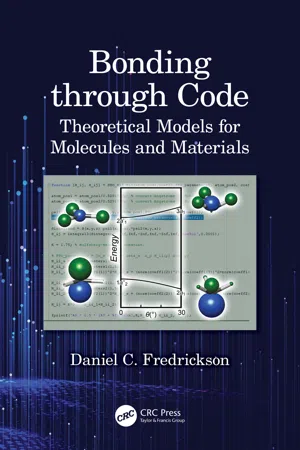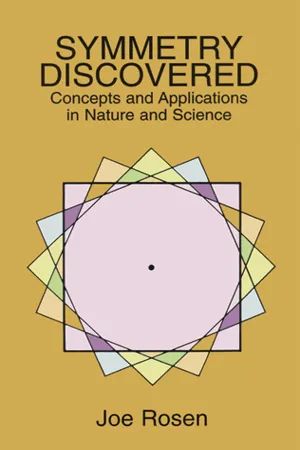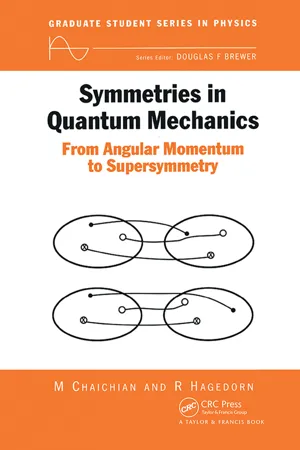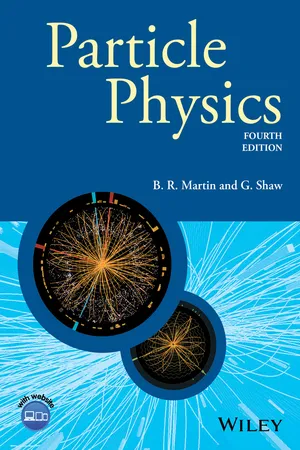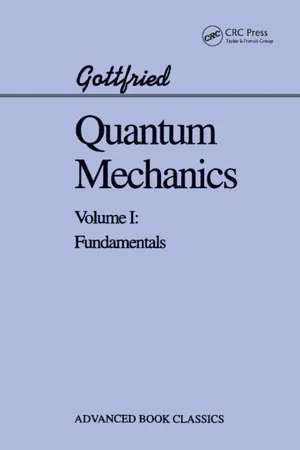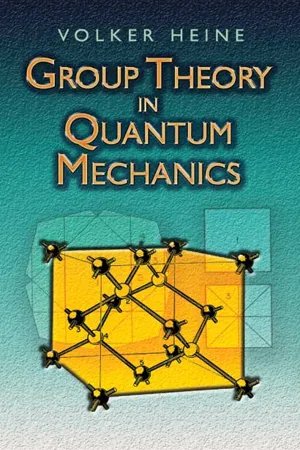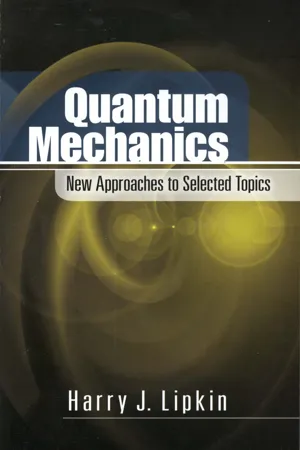Physics
Translational Symmetry
Translational symmetry refers to the property of a system remaining unchanged under a shift in position. In physics, this means that the laws of nature remain the same when an object is moved from one position to another. This symmetry is a fundamental concept in understanding the conservation of momentum and energy in physical systems.
Written by Perlego with AI-assistance
Related key terms
9 Key excerpts on "Translational Symmetry"
- Emil Zolotoyabko(Author)
- 2021(Publication Date)
- Wiley-VCH(Publisher)
1 General Impact of Translational Symmetry in Crystals on Solid State PhysicsAtomic order in crystals. Local and translational symmetries. Symmetry impact on physical properties in crystals. Wave propagation in periodic media. Quasi-momentum conservation law. Reciprocal space. Wave diffraction conditions. Degeneracy of electron energy states at the Brillouin zone boundary. Diffraction of valence electrons and bandgap formation.In contrast to liquids or gases, atoms in a solid state, in average (over time), are located at fixed atomic positions. The thermally assisted movements around them or between them are strongly limited in space (as for thermal vibrations in potential wells) or have rather low probabilities (as for long-range atomic diffusion). According to the types of the averaged long-range atomic arrangements, all solid materials can be sub-divided into the three following classes, i.e. regular crystals, amorphous materials, and quasicrystals.Most solid materials are regular (conventional) crystals with fully ordered and periodic atomic arrangements, which can be described by the set of translated elementary blocks (unit cells) densely covering the space with no voids. Nowadays, using the advanced characterization methods, such as high-resolution electron microscopy or scanning tunneling microscopy, it is possible to directly visualize this atomic periodicity (Figure 1.1 ). Due to the Translational Symmetry, the key phenomenon – namely, diffraction of short-wavelength quantum beams (electrons, X-rays, neutrons) – takes place. As we show in the following text, sharp diffraction peaks (or spots), which are the “visiting card” of crystalline state, are originated from the quasi-momentum (quasi-wavevector) conservation law in 3D.In contrary, amorphous materials, being characterized by some kind of short-range ordering, do not reveal atomic order on a long range (Figure 1.2- eBook - ePub
Bonding through Code
Theoretical Models for Molecules and Materials
- Daniel C. Fredrickson(Author)
- 2020(Publication Date)
- CRC Press(Publisher)
CHAPTER 14Translational Symmetry and Band Structures
Introduction
Earlier, we saw how symmetry places restrictions on the wavefunctions of a system: A molecule’s energy eigenfunctions must transform as irreducible representations of the point group symmetry, and interactions between functions transforming as different irreducible representations are forbidden by symmetry. These properties greatly simplified the construction of MO diagrams for molecules. The power of group theory, however, is even more evident in the way that it opens a path to calculate the electronic structure of periodic structures, such as crystals and surfaces—systems that contain a nearly limitless number of atoms, and would thus lead to unmanageably large Hamiltonian matrices without the help of symmetry. In this chapter, we will see how the application of symmetry to such structures leads to the concepts of k -space and energy bands, allowing us to expand our MATLAB® code to work with crystalline materials.Translational Symmetry and Bloch’s Theorem
Periodic structures have symmetry operations that we have not considered so far: lattice translations, in which a shift of the structure by certain vectors leads to a structure indistinguishable from the original. For a 3D crystal, these vectors are simply all of the possible linear combinations of the a , b , and c vectors defining the unit cell with integer coefficients, as follows:
From these vectors, we can define a series of operations corresponding to the full set of lattice translations:R=n an bn cn aa +n bb +n cc
Just as for rotations, reflections, and inversions, the electron density should be left invariant to each of these operations, as is expressed in the following equation:=T ^n an bn c+T ^an a+T ^bn bT ^cn cρ ( r ) = ρ ( r −T ^n an bn cn aa −n bb −n cc ) = ρ ( r )where ρ (r - eBook - ePub
Symmetry Discovered
Concepts and Applications in Nature and Science
- Joe Rosen(Author)
- 2012(Publication Date)
- Dover Publications(Publisher)
spatial symmetry.Linear symmetry
Winnie-the-Pooh read the two notices very carefully, first from left to right, and afterwards, in case he had missed some of it, from right to left.The geometric transformations that we discuss for 1-dimensional systems are displacement and plane reflection.(A.A. Milne: Winnie-the-Pooh )Fig. 3.1 Displacement transformation of 1-dimensional systemThe transformation of displacement (or translation ) involves displacing the system by a given interval in the only direction that the system is considered to have (fig. 3.1 ). A system can be symmetric under displacement only if it is of infinite extent and so has no ends.Fig. 3.2 Displacement symmetric 1-dimensional systemsAn infinite straight line is symmetric under displacements by any interval in the direction of the line (fig. 3.2 (a )). So too is an infinite straight rod of constant diameter (fig. 3.2 (b )). Any system that has an infinite regular repetition in one direction is symmetric under displacements in that direction, but only under those displacements by a certain minimum displacement interval and multiples of it. The patterns of fig. 3.3 are examples of such systems. The minimum displacement interval is denoted by a in each case.No real system is infinite, however, so no real system can have exact displacement symmetry. But a finite system is said to have approximate - eBook - ePub
Symmetries in Quantum Mechanics
From Angular Momentum to Supersymmetry (PBK)
- M Chaichian, R Hagedorn(Authors)
- 2023(Publication Date)
- CRC Press(Publisher)
2 Symmetry in Quantum Mechanics2.1 Definition of symmetry
2.1.1 General considerations
Consider any given structure—whether a physical system or a geometrical figure, a set of rules, an equation or a set of points in abstract space—whatever it may be, we only require the possibility of its mathematical description. Such a structure can always be cast in the following abstract form: it contains elements with names such as ‘electron’, ‘angle’, ‘sequence’, ‘five’ or ‘vector’ and it contains relations between these elements. Obviously the relations are the important things, for if two structures happen to contain different elements but the same relations, then knowing these relations we know everything about both structures. It might well happen that the relations of one structure are considered as elements of another structure when things are described on a higher level. In any case, the elements of a given structure can be represented by points in an abstract space. We then consider transformations in that space. Among all possible transformations in that space there might be a group of transformations which leave the relations between the points unaffected. We say the relations are invariant under this particular group of transformations and we call this group the symmetry group of our structure. Very different structures may have the same symmetry group; therefore, a symmetry group is itself a new independent structure with elements (the transformations considered above) and relations (namely the group properties and the particular law of multiplication of that group). This leads to the consideration of the various symmetry groups as abstract mathematical objects (e.g. the permutation group, Lorentz group, gauge group etc); individual realizations of these groups (e.g. the hydrogen molecule, the free particle of spin ½, the Lagrangian of charged particles—to mention only examples corresponding to the groups just mentioned)—such realizations are not considered in the study of abstract groups. - eBook - ePub
- Brian R. Martin, Graham Shaw(Authors)
- 2016(Publication Date)
- Wiley(Publisher)
Their violation will be discussed in Chapter 11. Here we shall neglect weak interactions and concentrate on the strong and electromagnetic interactions with which we will be primarily concerned in the next two chapters. The conservation laws we discuss have their origin in the symmetries and invariance properties of the underlying interactions. To understand the connection between these we consider firstly a simple example, that of translational invariance, and show that it leads directly to the conservation of linear momentum. 5.1 Translational invariance Translational invariance expresses the fact that all positions in space are physically indistinguishable. By this we mean that when a closed system of particles (i.e. one on which no external forces are acting) is moved as a whole from one position in space to another, its physical properties are unaltered. In quantum mechanics this is expressed as an invariance of the Hamiltonian. If the system is displaced a distance a, then the position vector r i of a particle i becomes r ′ i = r i + a, that is (5.1) where it is sufficient for what follows to consider only infinitesimal displacements, a = δ r. The Hamiltonian will similarly be replaced by a new Hamiltonian For the case of a single free particle of mass m, and one easily sees that the two Hamiltonians are equal, that is (5.2) In general, (5.3) for a closed system, and the Hamiltonian is said to be invariant under the translation (5.1). We now specialise to a system containing just a single particle and introduce a translation operator defined by (5.4) where Ψ(r) is an arbitrary wavefunction. Expanding the right-hand side of (5.4) to first order in δ r gives Thus (5.5) where is the operator for linear momentum. The conservation law for linear momentum follows by first applying to the wavefunction giving (5.6) and then comparing with the results obtained from the definition (5.4), that is (5.7) where we have used the invariance property of the Hamiltonian (5.3) - eBook - ePub
- A C Sharma(Author)
- 2021(Publication Date)
- CRC Press(Publisher)
4Transformations, Conservation Laws, and Symmetries
There would be no laws of physics without invariance principles. We rely on experimental results remaining the same from day to day and place to place. An invariance principle is intimately related to a conservation law and it reflects a basic symmetry. Analysis of various transformations makes the form of the laws involved invariant. For example, (i) the invariance of physical systems with respect to spatial translation (in other word that the laws of physics do not change with locations in space) gives the law of conservation of linear momentum. (ii) Invariance with respect to rotation gives the law of conservation of angular momentum. (iii) Invariance with respect to time translation gives the well-known law of conservation of energy. In quantum field theory, the gauge invariance of the electric potential and vector potential yields conservation of electric charge.4.1 Translation in SpaceIn the case of translation in space, it is important to notice whether the system is being translated by vector a or the coordinate axes are being translated by a, which would result in the opposite change in the wave function. Results for translating the wave function by + a would be the same as for translating the coordinate axes along with the apparatus and any external fields by − a relative to the wave function. These two equivalent operations are analogous to the time development in the Schrödinger picture and in the Heisenberg picture. In the Schrödinger picture, bras and kets change in time while operators do not. In the Heisenberg picture, operators develop with time while the bras and kets do not change. Therefore, there are two possible ways to deal with space translations: transform the bras and kets or transform the operators. We here consider the situation where bras and kets are transformed while operators are left unchanged. Let us consider a 1D case, where the translational is made by an operatorT ( a ) - eBook - ePub
Quantum Mechanics
Fundamentals
- Kurt Gottfried(Author)
- 2018(Publication Date)
- CRC Press(Publisher)
q’s are involved. The treatment that follows will not really do justice to the question of how the symmetry generators are to be constructed in a consistent and systematic fashion from the basic dynamical variables. Instead we shall lean rather heavily on the classical analogy—the Correspondence Principle. For an account of the various systematic formulations of quantum dynamics—especially the theories of Feynman and Schwinger—the reader is referred to the book by Mandelstam and Yourgrau.Before entering into the detailed study of symmetry, we should really make two general remarks in the hope of removing some frequently entertained misconceptions. First of all, as long as we are not talking about the whole universe, it is presumably always possible to translate (or rotate, etc.,) a physical system, and therefore observables like the total momentum should be contained in any realistic (as compared to model) theory. But the existence of such observables and the associated transformations does not, by itself, imply that the dynamical equations governing the behavior of an arbitrary system are covariant under these transformations. On the other hand, only when the equations possess this invariance do symmetry arguments attain their full power. Moreover, the experimental definitions of quantities like the linear or angular momentum depend on the existence of conservation laws. The second remark concerns the fact that many discussions of invariance principles make it appear that they are self-evident. This is hardly the case, because these principles are only simple when they refer to the laws of nature themselves, and not to particular physical situations. A simple and familiar example will illustrate this. Consider Laplace’s equationthis is a highly symmetric statement whose form does not change under a very wide class of transformations on the coordinate system. Nevertheless, Laplace’s equation admits solutions that appear to have no vestige of these invariance properties. Experiments always observe solutions, never basic equations. Therefore the existence of symmetry principles is not always obvious. It is the task of theoretical physics to extract the symmetry principles from data on asymmetric phenomena, and to predict further consequences that can be tested by observation.* Like all the other laws of nature the symmetry principles are not a priori∇ 2ϕ = 0 ; - eBook - ePub
Group Theory in Quantum Mechanics
An Introduction to Its Present Usage
- Volker Heine(Author)
- 2013(Publication Date)
- Dover Publications(Publisher)
n electron problem can often be treated as simply and as rigorously as a one electron problem. At the present time the most spectacular illustrations of these two aspects of symmetry arguments occur in nuclear and fundamental particle physics. The shell-model theory of the energy levels of nuclei has been developed, with selection rules for various transitions, etc., all without an exact knowledge of the interaction between two nucleons. Similarly it is possible to discuss tentatively the relationships between the various fundamental particles and give selection rules for transitions between them, which are based purely on symmetry ideas, such as spin, charge conjugation, isotopic spin and parity, without the slightest understanding of the field equations describing the interactions of all these particles.2. Expressing Symmetry Operations Mathematically
Many of the symmetry properties that we shall be concerned with involve rotations, so that we shall start by considering how a physical operation such as rotating a system is expressed mathematically.Consider a body with a point P on it which has co-ordinates (x, y, z ). If we rotate the body clockwise by an angle α (Fig. 1 ), i.e. we rotate by − α about the z -axis in the conventional sense, the point P moves to the position P′ (X, Y, Z ), where(2.1)i.e.(2.2)FIG. 1 . Rotation of a point P to P′.Here and elsewhere the x-, y- and z-axes are chosen to form a right-handed set. However, instead of rotating P, we can also consider the body and P as fixed, and refer all co-ordinates to a new pair of axes OX and OY which make an angle + α with Ox and Oy (Fig. 2 ).FIG. 2 - eBook - ePub
Quantum Mechanics
New Approaches to Selected Topics
- Harry J. Lipkin(Author)
- 2014(Publication Date)
- Dover Publications(Publisher)
both the states and the operators are transformed. Thus, although the states and operators change their form, all matrix elements remain invariant.An important special class of coordinate or canonical transformations are those which correspond to a symmetry of the system. These include translations, rotations, space inversion and time reversal. Under a symmetry transformation which does not depend explicitly on time, the form of the Hamiltonian and of the equations of motion remain invariant. In contrast to the case of the transformation to spherical coordinates discussed above, both the lines x = constant and y = constant represent possible paths of motion in the absence of forces and both the wave functions eikx and eiky represent plane waves which are possible states of motion for a free particle. Thus the 90° rotation about the z-axis which transforms x into y does not change the form of the equations of motion of a free particle, its possible paths of motion or the eigenfunctions of the Hamiltonian.These transformations can be interpreted in three ways, as transformations of the coordinate system without changing the physical system, as transformations on the physical system without changing the coordinate system, or as changing both. In discussing the behavior of the hydrogen atom under translations one can examine the change in the description of a hydrogen atom when the origin of the coordinate system is moved from Rehovoth to Timbuctoo without doing anything to the hydrogen atom. One can also examine what happens when the hydrogen atom itself is moved from Rehovoth to Timbuctoo without any change in the origin of the coordinate system. One can also move both the hydrogen atom and the coordinate system from Rehovoth to Timbuctoo.In the first case the translational invariance of the dynamics of a hydrogen atom is expressed by the invariance of the Hamiltonian and of its equations of motion when the variables are changed by moving the origin of the coordinate system. In the second case the translational invariance is indicated by the existence of two different hydrogen atoms, one in Rehovoth and one in Timbuctoo which both satisfy the same
Index pages curate the most relevant extracts from our library of academic textbooks. They’ve been created using an in-house natural language model (NLM), each adding context and meaning to key research topics.

